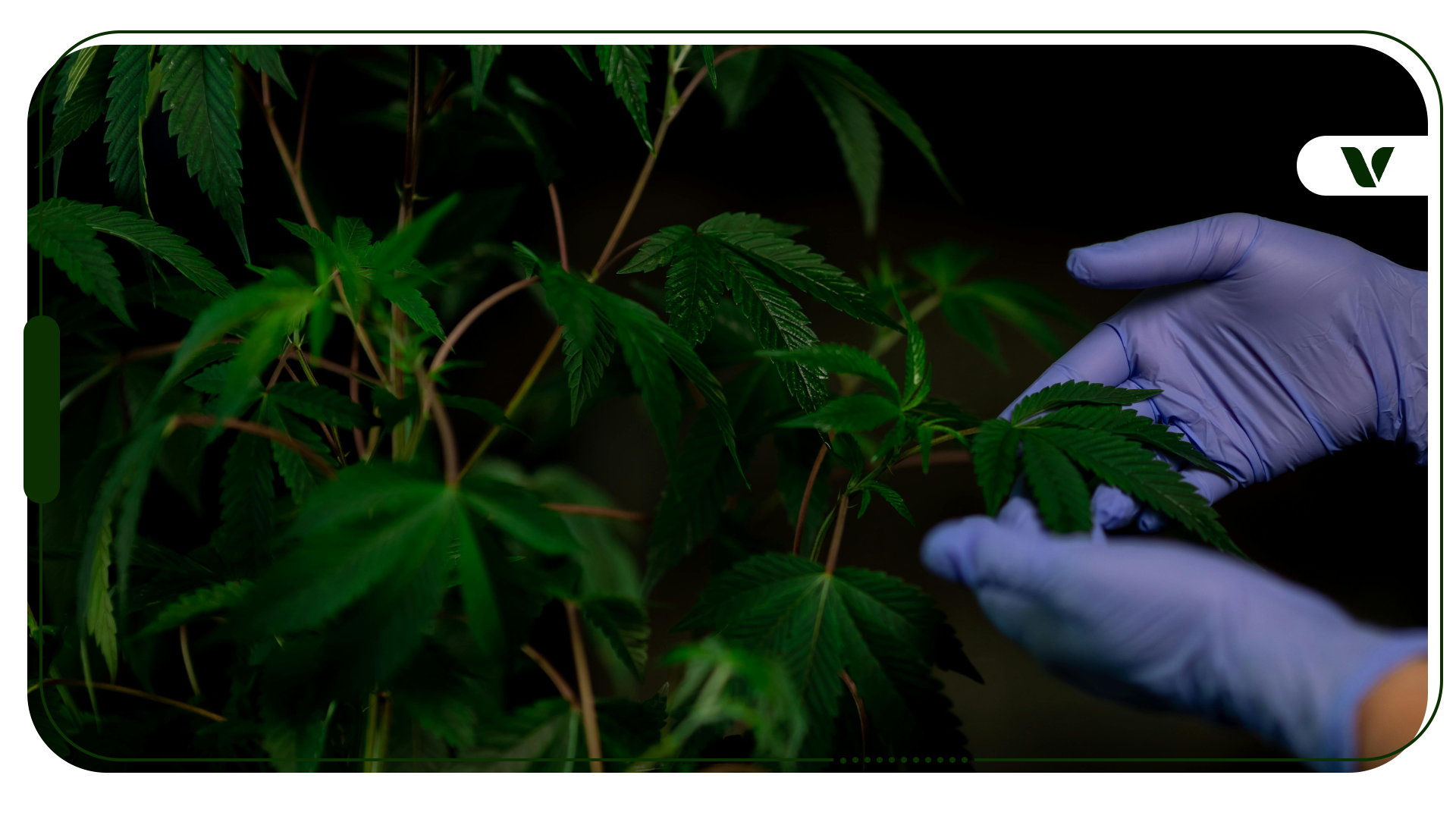In 1970 cannabis was federally placed as a Schedule I drug in the US, a category that is tightly restricted and reserved for drugs not medically accepted. When it comes to classifying drugs medically or recreationally, generally there are four broad categories according to the US federal government. Based on their properties and effects, a drug can either fall into opiates and opium derivatives, depressants, hallucinogens, or stimulants. So what is marijuana classified as?
According to the US schedule 1 of controlled substances, cannabis is actually in a class of its own called Tetrahydrocannabinols. This class includes isomers which are drugs that have the same chemical makeup as Δ9-tetrahydrocannabinol (THC), but the chemical molecules are arranged in a different order.
The tetrahydrocannabinol classification, however, can be easily confused on the schedule with cannabimimetic agents. The funny thing about this is that these agents do not contain cannabis even though they are able to activate CB receptors in the body through the endocannabinoid system (ECS). You may have heard of cannabimimetic drugs that are marijuana synthetics such as K2 and Spice. Please check out our guide on how these synthetic products are dangerous.
What Are The Main Drug Types?
While all individuals react differently to various drugs for various reasons, physicians generally classify drugs based on shared effects. Oftentimes, drugs are categorized into seven groups:
- Central Nervous System (CNS) depressants: CNS depressants slow down the operations of the brain and body. Ex. alcohol, Valium, Xanax, Prozac, barbituates, etc.
- CNS stimulants: CNS stimulants accelerate heart rate and elevate blood pressure. Ex. cocaine, amphetamines, methamphetamine, etc.
- Hallucinogens: Hallucinogens alter a person’s perception of reality. Ex. LSD, psilocybin, PCP, peyote, etc.
- Dissociative Anesthetics: Dissociative anesthetics inhibit pain by cutting of the brain’s perception of it. Ex. PCP, dextromethoraphan, etc.
- Narcotic Analgesics: Narcotic analgesics relieve pain and induce euphoria in users. They are often also classified as opiates. Ex. opium, codeine, heroin, morphine, etc.
- Inhalants: Inhalants are breathable substances that produce mind-altering effects. Ex. paint, gasoline, hair sprays, etc.
- Cannabis: Standing in a category all its own, cannabis compounds interact with the endocannabinoid system to produce psychoactive and potentially therapeutic and pain-relieving effects.
Why it’s difficult to classify weed
Cannabis is difficult to classify, which is why it’s often categorized all on its own. Cannabis offers a wide range — and sometimes complex — range of effects, including pain relief, euphoria, altered perception, and sedation. These various effects can differ from individual to individual, thanks to a number of factors such as metabolism, frequency of use, and the different strains of weed available on the market.
Just as these effects differ person to person, the medical applications of cannabis is vast and ever-changing, thanks to ongoing research. Its potential therapeutic benefits further complicate its classification, as it may not fit neatly among other drug types.
Additionally, the legal status of cannabis differs from state-to-state (and may change soon, thanks to the Biden Administration’s efforts to reclassify cannabis as a Schedule III substance). This legal ambiguity can complicate efforts to classify cannabis within traditional drug categories.
Cannabis classification is a controversial question because it is not merely a stimulant, depressant, or hallucinogen. People respond to cannabis in different ways. While cannabis has depressant, hallucinogenic, and stimulant properties, it does not fit into any one of these categories. Frankly, when it comes down to it, we don’t have a clear consensus on cannabis classification.
Is Weed A Depressant?
Depressants are drugs that have a relaxing effect. They may reduce anxiety and muscle tension and make a person feel sleepy. Cannabis is largely viewed as a depressant because it slows down messages that travel between the body and brain. Like traditional depressants, cannabis’ depressant properties can cause sleeplessness, dizziness, and short-term memory loss.
It’s interesting to note that few scientific studies support this simply. It seems to depend on the amount of THC and cannabinol (CBD) that are found in specific strains of cannabis plants as to the effect. But this research suggests that the lower the dose of THC, the more you feel relaxed. It is important to find your sweet spot.
Is Weed A Stimulant?
Stimulants are drugs that increase alertness and elevate mood often by targeting the neurotransmitters dopamine and norepinephrine in the brain. Stimulants increase alertness, attention, and heart rate. Like other stimulants, cannabis has been shown in some consumers to increase heart rate, alertness, elevate mood, and improve attention.
Similar to the section above, higher doses of THC tend to induce anxiety. In addition, the euphoric feeling you get from cannabis can vary based on the strain and its cannabinoid and terpene profile. People used to think that the type of high you experience depends on whether the cannabis was a Sativa or Indica, but we now know that the effect comes from a variety of factors that are specific to the strain of cannabis being consumed.
Why You Should Get Your Medical Marijuana Card
Veriheal has satisfied millions of patients nationwide by giving them access to these benefits
- Larger purchase limits
- Peace of mind
- Enhanced legal protection
- Access to higher potency strains
- Save up to 25% on cannabis purchases
- Skip the line at the dispensary
Is Weed A Hallucinogen?
Hallucinogens are a class of drugs that cause profound distortions in a person’s perceptions of reality. These substances are also found naturally in certain plants and fungi. Even though the effects are often temporary, the massive doses of the substance can cause delusions, hallucinations, and alter the sense of personal identity. The substance can also cause hallucinogen symptoms like heightened sensory perception and detachment from self. A heightened sensory perception is a mild form of hallucination that some people may actually find enjoyable. An example of this is how cannabis users tend to reach for sweet or salty snacks, which seemingly taste better and are more desirable after smoking or taking edibles.
According to schedule 1 of controlled substances, cannabis which is referred to as “marihuana” or “marihuana extract” is legally classified as a hallucinogen. This is dictated in the Controlled Substances Act (CSA) and governed/used by a variety of federal agencies including the Food & and Drug Administration (FDA) and the Drug Enforcement Agency (DEA). Additionally many states follow these guidelines, especially those that have medical and recreational cannabis laws.
Is Weed An Opiate?
Opiates are drugs derived from the opium poppy plant, such as morphine, heroin, and codeine, which are primarily used for pain relief.
Cannabis, on the other hand, is a plant that contains compounds called cannabinoids that interact with the body’s endocannabinoid system and can have various effects, including pain relief, relaxation, and altered perception, but they are not opiates. However, the THC within cannabis does have an indirect effect on opioid receptors, which may be part of the reason cannabis seems to help reduce pain symptoms.
Specifically, research has found that CB2 receptors can indirectly activate opioid receptors, potentially boosting opioid pain relief alongside cannabinoids’ direct effects. Activation of either type of receptor produces similar physiological effects, including pain relief. Both CB1 and CB2 agonists can induce pain relief by increasing opioid production or releasing natural opioids. Therefore, altering the opioid system can affect the pain-relieving effects of cannabinoids, and vice versa, indicating shared mechanisms for pain relief between the two systems.
Final Takeaway
Facts remain that cannabis induces all three categories of response: a sense of relaxation (depressant effect), mild euphoria or elevated mood (stimulant effect), and heightened sensory perception (hallucinogenic effect). There are many factors and variables to consider when trying to categorize potential responses to cannabis ingestion. The percent of THC in the drug, dosage, and method of administration are also significant factors in how a person reacts to cannabis. Various phenotypes and cultivars of the plant may also produce different effects on the body and mind. Cannabis is made up of several cannabinoids and terpenes, each that will affect how a user feels regarding their attention and alertness.
Additionally, it is worth noting that cannabis, along with other Schedule I drugs, have complex histories and nuances that contribute to how they are classified. Classifying these drugs vary based on who is classifying them as well as what purpose they are being classified for. Additionally, the amount of synthetic cannabinoids included can impact the effects and health status of the plant. When it comes down to it, it’s ok to classify it based on how you use it, but know that legal and scientific classifications of cannabis exist for a reason.
Frequently Asked Questions
What happens if you take a stimulant and a depressant at the same time?
When you take a stimulant and a depressant at the same time, your cardiovascular, respiratory, and central nervous systems receives mixed messages to speed up and slow down. These mixed messages can cause severe consequences including overdose, coma, cardiac arrest, and potentially death.
Which cannabis terpene(s) have stimulating effects?
Strains that contain the terpenes Pinene, Limonene, or Beta Caryophyllene often have stimulating effects. These effects may differ from person to person.
Are depressants more addictive than stimulants?
Both depressants and stimulants can be addictive. The likelihood for addiction generally differs on a case-by-case basis.
Note: The content on this page is for informational purposes only and is not intended to be professional medical advice. Do not attempt to self-diagnose or prescribe treatment based on the information provided. Always consult a physician before making any decision on the treatment of a medical condition.
This article was originally published in October 2021 and most recently updated in May 2024.
Author, Share & Comments








